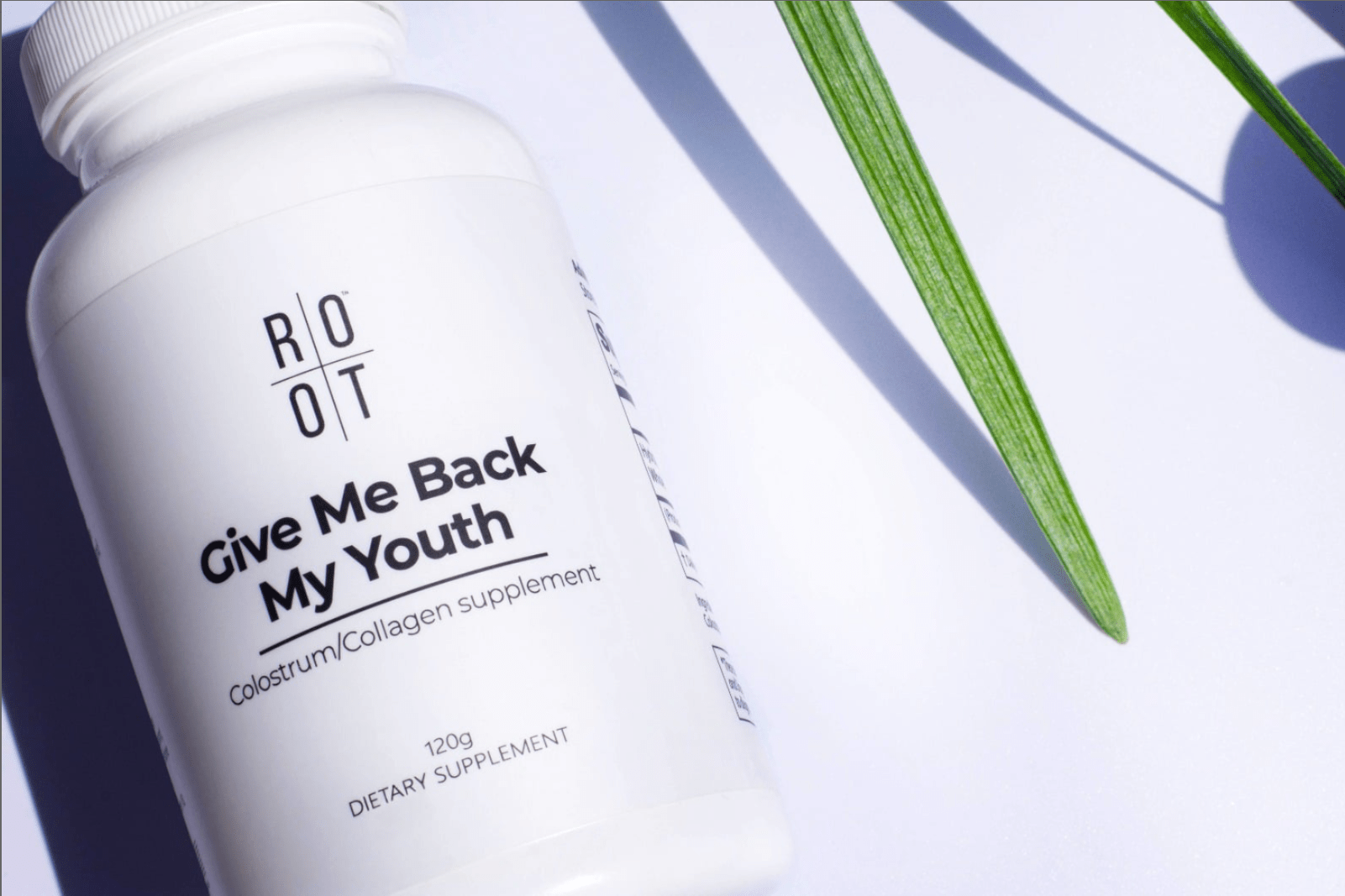
Heavy metals

Guest article by Dr. med. Dietrich Klinghardt
Heavy metals according to Dr. Klinghardt
Dr. med. Dietrich Klinghardt (born 1950 in Berlin) studied medicine in Freiburg and has been working as a doctor in Seattle (USA) since 1982. He was not only interested in the appearance of the disease, but also began to research its cause. He quickly reached the limits of conventional medicine, adopted a variety of alternative methods, and over the years developed his own forms of diagnosis and therapy (autonomic regulation test, psycho-kinesiology, mental field therapies), which are now known as the Klinghardt method entered medicine.
In 1996, Klinghardt founded the INK - Institute for Neurobiology. The institute's task is to maintain and disseminate Klinghardt's teachings in German-speaking countries.
What are heavy metals?
Heavy metals (SM) are called heavy metals because their specific weight is heavier than other metals, the light metals. This group of heavy metals includes, for example: mercury, lead, cadmium, nickel, zinc, copper. The light metals: these include aluminum, titanium and some others. There are certain metals that occur naturally in us: for example, copper is present in our red blood cells and in many enzymes. Selenium is an important metal that is found and used, for example, in the thyroid gland, zinc in the immune system, magnesium in white blood cells and in many enzymes, etc. All metals that occur naturally in us are usually referred to as trace elements.
But all metals that shouldn't be in us, but are in us, are often grouped together for the sake of simplicity under the word heavy metals. Although aluminum is a light metal, for linguistic reasons it is often classified as a heavy metal because it has similar toxic functions. And to go through the list, there are a few borderline metals that we still don't know whether they occur naturally in us or are in us as a sign of poisoning.
Where are we poisoning ourselves?
Heavy metals can be absorbed through food. Almost all fish are contaminated with heavy metals because the sea has become an industrial waste bin. Especially fish that are a bit more developed like swordfish, tuna and sharks.
The bigger fish eat the smaller fish and the smaller fish eat even smaller fish and the smallest fish eat these molluscs that sniff around at the bottom of the ocean.
Industry, in particular, releases heavy metals into the atmosphere through the combustion process and then into the fields into our food. Titanium dioxide is a common preservative in medications. Heavy metals such as cadmium are also absorbed through car exhaust fumes.
Many medications and vaccines still contain mercury. Metals can also be absorbed through the skin, for example you can wear a copper ring on your arm if you have arthritis. Copper is absorbed through the skin and you can create high enough copper levels to reduce certain forms of arthritis.
The air in our homes is often significantly contaminated with pollutants such as PCP, heavy metals, lindane, formaldehyde, azo dyes, pesticides and insecticides. Allergies, breathing difficulties, burning eyes, headaches and inexplicable constant tiredness, multiple chemical sensitivity (MCS) and even cancer can result. The indoor air pollution in apartments with new interior fittings is often up to 50 times greater than at busy intersections.
History of amalgam
Amalgam is 150 years old and was invented in France. The first doctors who came to America and brought amalgam with them were arrested as charlatans. Amalgam was banned. But then it came to America through clandestine routes and then there was the Amalgam War, as they said at the time. There were people who said amalgam is good and there were people who said you installed amalgam in them, they have back pain or are in a wheelchair, some have already died and the people who don't have amalgam are still healthy. But the pressure from the population at that time was so great because amalgam was much cheaper than gold.
Inhale
The most dangerous source of heavy metal intake is inhalation. When vaporized mercury is inhaled, 82% of this mercury is absorbed and deposited in the nervous system. When you eat the mercury, only about 7% is absorbed into the body; The rest is so tightly bound to the ingredients of the food and comes out with the stool.
If a mercury thermometer or energy-saving lamp breaks, the mercury vapor is enough to cause all kinds of serious harm to children.
amalgam
Dental amalgam is a mixture consisting of 50% liquid mercury and 50% a powder of copper, silver, tin, zinc and traces of other heavy metals (palladium). This material is very inexpensive and easy to process, which is the main reason for the widespread use of this dental filler. The heavy metals
From the fillings, abrasion from chewing and sour or hot foods get into the saliva, from where they enter the blood via the gastrointestinal tract.
It has been calculated that within 7 years, half of the mercury from a filling has evaporated and 80% of it remains in the nervous system. A filling weighs 500 - 1000 mg = 1g, which is not unusual for a filling, meaning there are 500 mg of mercury in the filling. It is estimated that the lethal dose of methyl mercury is less than 1 mg. We only survive because the body has time to distribute it.
The bacteria in the mouth and intestines can convert the mercury from dental fillings into methylmercury, which is 50 times more toxic than other mercury.
If you measure an average patient who has eight amalgam fillings in his mouth with a device that can measure mercury vapor two hours after eating, you will often find 100 to 200 times the industry-permissible value.
Mercury (Hg)
Mercury is by far the most toxic heavy metal and is 10x as toxic as lead and 3x as toxic as arsenic. Since we accumulate a whole cocktail of heavy metals and other chemical poisons in ourselves over the course of our lives, a synergistic effect occurs, which means that the effect of the individual substance is increased many times over.
Lead
There was an epidemiological study in 1997 that looked at 4-5 hundred year old skeletons and looked at skeletons from the last 10 years where it was found that the lead content in our bones is 500 to 1,000 times higher than it was 400 years ago was.
We know what lead poisoning does. It has very big effects on the brain and on the intellectual development of children, especially the development of intelligence is significantly inhibited. In the bones, lead poisoning causes a disruption in blood formation, which can lead to leukemia, anemia, lymphoma and all the tumors of the hematopoietic system.
Mercury thermometer and energy saving lamp
If the Hg thermometer or a Hg energy saving lamp breaks, the mercury at room temperature is released and evaporates. The vapor is tasteless, odorless and invisible.
There have been a number of deaths where children sniffed a broken mercury thermometer and if they inhaled enough of it, kidney failure occurred a short time or days later and the children then died.
Important: Ventilate well and avoid the room.
The consequences of heavy metal poisoning
Mercury makes some enzymes non-functional, including those responsible for detoxification.
Heavy metal poisoning in our body leads to chronic infections, including fungi, bacteria, mycoplasma and viruses. The symptoms that the patient has are often triggered by the infections. And the biggest mistake made in medicine is when the infection is treated without changing the environment by removing the heavy metals.
It has now been confirmed by conventional medicine that we all have an accumulation of neurotoxins. Neurotoxins are also heavy metals, which have a synergistic (enhancing) effect with other poisons.
Deposits in the body
There are so-called mercury deposits that are deposited in the surroundings or in other connective tissue places such as joint capsules, shoulder joints, jaws, knee joints, hair.
Fibromyalgia is a disease that mostly women have. They complain of pain all over the body in the muscles, connective tissue and bones with mild depression and insomnia. As a result, mercury is deposited in the layer of tissue surrounding the muscle. Dr. Klinghardt was able to completely cure all patients with fibromyalgia (over 1000) within 4 months.
Increased intake of environmental toxins
People exposed to mercury absorb more other environmental toxins because the mercury prevents the cell from sealing itself off against them and allows the cell to absorb more heavy metals, pesticides and formaldehyde. This means that toxins can accumulate 30 to 100 times more in people exposed to amalgam. The toxicity of the substances themselves is increased up to 2,500 times.
Sensitivity to electrosmog
Mercury and other metals act like “antennas” that increase sensitivity to electromagnetic radiation. In this context, less melatonin is released in the stressed epiphysis (pineal gland), or the rhythm of the release is disrupted.
Shaking paralysis (Parkinson's disease)
During shaking paralysis, cells of the substantia nigra (black substance) in the brain, which produce the messenger substance dopamine, are destroyed. This leads to tremors, stiffness and lack of movement as well as symptoms such as sweating, blood pressure regulation disorders and psychological changes.
Cause: Poisoning, pesticides, heavy metals, medications

Mercury in nerve cells
Once it is difficult to get mercury out of the nerve. On the other hand, it is said that if these tubes are destroyed, the nerve can no longer nourish itself properly, it can no longer urinate and have bowel movements properly. The nerve cells are also living beings that have these functions and it goes through the tubes and when they are blocked, nothing comes out and the nerve cells become poisoned with their own substances.
In addition, it has the effect that all other toxins that enter the cell can no longer get out. Dioxin, formaldehyde and all the pesticides, insecticides, etc.
Studies on mercury effects
Many years ago, the University of Calgary, Canada, did a study where they placed mercury fillings (amalgam) on sheep. Radioactive mercury was incorporated into them so that the sheep could later be placed in front of a camera that would detect radioactivity. You could photograph them and know where the mercury was in the sheep. Within 24 hours the entire spinal cord was impregnated, the entire brain was full of mercury, including the adrenal glands and the endocrine glands, i.e. the ovaries or the testicles and the intestinal wall.
However, we now know that mercury from the fillings gets into the blood and intestinal mucosa, from there it is moved to various areas of the body and remains there very happily for the rest of the patient's life. Mercury is a substance that is not only absorbed by nerve tissue, but also has a destructive effect on nerve tissue. These are the so-called tubulin molecules.
Renal dysfunction
In the sheep, the filtration performance of the kidneys fell by over 55% after just 60 days. When the excretory function of the kidneys decreases, mercury contamination is often not recognized.
Damage and symptoms caused by mercury
Mercury easily passes from fillings into our brains and other organs, causing the following damage:
• All neurological diseases of any kind such as epilepsy, multiple sclerosis (MS), sleep disorders, pain of all kinds, autism, dementia, Parkinson's, amyotrophic lateral sclerosis (ALS), migraines, fibromyalgia, dyslexia, stuttering, dystonia, dizziness, insomnia
• Emotions: depression, tantrums, shyness, aggressiveness, irritability
-
Learning disorders (memory disorders even in young people)
-
Eye and ear disorders, thyroid dysfunction
-
Kidney liver damage, gum inflammation
-
Bone marrow diseases
-
Leukemia, tumors
-
Susceptibility to infections (intestinal fungi, herbal viruses ... )
-
Autoimmune diseases
-
Cardiac arrhythmias
-
Electrosensitivity
-
Impaired conception
Antibiotic resistance
The biggest problem in conventional medicine is the resistance of germs to antibiotics. Until now, it was assumed that the only thing that made bacteria resistant to antibiotics were antibiotics. If you give penicillin long enough, the bacteria in the organism adapt to the penicillin and are then resistant. Bacteria have a wonderful ability to communicate. When the bacteria in the organism have become resistant to penicillin, they release so-called plasmids. These are small bubbles that contain nothing except a bit of DNA or RNA, which tells the other bacteria in the environment how to become resistant to penicillin, so they contain the trick, so to speak - a small bubble with the trick. Not only that, but every time we breathe out, a gush of millions of these plasmids comes out into our environment. The other bacteria learn the trick very quickly.
Mercury and hormones
Boys are four times more likely to suffer from mercury poisoning because testosterone significantly increases the effect of the poisons, while estrogen protects against it. If lead contamination is also present, a synergistic effect occurs, with the effect of mercury increasing 100-fold.


Neurological disorders
The classic mistake is that blood, hair, urine and stool tests are carried out on patients with neurological disorders and heavy metals are not detected anywhere. It is concluded that there are none present in the body. Sick patients have much less mercury, for example in their hair, than healthy patients. This is because it is still built into the cells. Mercury can only be broken down if it is transferred from the cell into the blood and can then be stored in depots where it causes less damage. Only after mobilization with DMPS or coriander herb can they be measured in the blood and urine shortly afterwards.
Aluminum is the triggering factor for Alzheimer's and dementia.
Used for water treatment (aluminum sulfate as a flocculant). Can be found in cosmetics, deodorants, medications (e.g. for heartburn), vaccinations (Al. hydroxide), aluminum cans, anti-caking additive for salt (Al. silicate) ... Aluminum is deposited in the brain and blocks some enzymatic substances Processes.
Fungi-Candida
Heavy metals are bound by fungi and the fungal disease is a way that the organism has found to bind heavy metals in the cell wall of the fungi without them going into the brain.
Mercury in pregnancy
60% of the mother's mercury is passed on to the firstborn baby through the combination of pregnancy and breastfeeding. The mother detoxifies herself through the child. Unless a few fillings were placed between births and the reservoir was replenished with heavy metals. Mercury passes through the placenta without any gaps.
Allergies in children and neurodermatitis are often caused by heavy metals from the mother that have been passed on to the child. Asthma in children, ulcerative colitis and Crohn's disease are typical heavy metal diseases.
Gold, platinum, palladium and co.
Gold fillings are not just made of gold, but are gold alloys, usually mixed with platinum, palladium, copper, silver, nickel. The average gold alloy used for a crown contains 8-12 different metals and 20-30 residues, traces of other metals. Gold is not harmless. Gold crowns and gold fillings release the metals much more slowly than mercury fillings. Therefore there are not so many problems with toxicity, but with allergies. When metals are washed into the body, i.e. slowly rubbed off the fillings, they enter the mouth via saliva and then into the intestines and then into the blood.

These metals then attach to certain cells in the kidneys, liver and intestines. As soon as a metal adheres to a cell, this cell is recognized as an enemy by its own immune system. This function is called the hapten function. It attaches itself to the cell in the body and this cell is thus marked as an enemy for the immune system.
Autoimmune diseases
The main cause of many autoimmune diseases are heavy metals, including:
-
Lupus
-
Scleroderma
-
arthritis
-
any thyroid problems
-
migraine
-
Ulcerative colitis
-
Crohn's disease
-
diabetes
They are mostly autoimmune diseases caused by haptens.
Implants
Implants are generally made of titanium. Titanium is an allergenic material for many people, which means that titanium implants are occasionally tolerated, but usually they have long-term consequences such that people become increasingly more and more allergic. After a few years, they develop autoimmune problems and eventually die as a result. In statistics, the patient is considered a success if the tooth (implant) lasted until death. The exception is ceramic implants, which are much better and have no metal. Implants are usually installed where an infected tooth has been extracted. The infected tooth left an infection in the bone that continues to simmer.
In no case does any information replace a visit to a doctor or therapist.
The findings and recommendations come directly from Dr. Klinghardt and his many years of research and experience.
All information is provided without warranty!literature
Various lectures by Dr. Diedrich Klinghardthttp://www.power-for-life.com/Schwermetall-Ausleitung/Schwermetall.html http://www.roh- kostwiki.de/wiki/Vortrag_von_Dr ._med._Dietrich_Klinghardt_%C3%BCber_Schwermetalle http://www. alternative-heilung.de/Schwermetallausleitung.htm http://www.naturmed-net.de/biblio/vn/broschuere.aus.html#oben
Link:
http://cinak.com/home.php?id=editions/zeitschrift (Dr. Klinghardt’s magazines)


